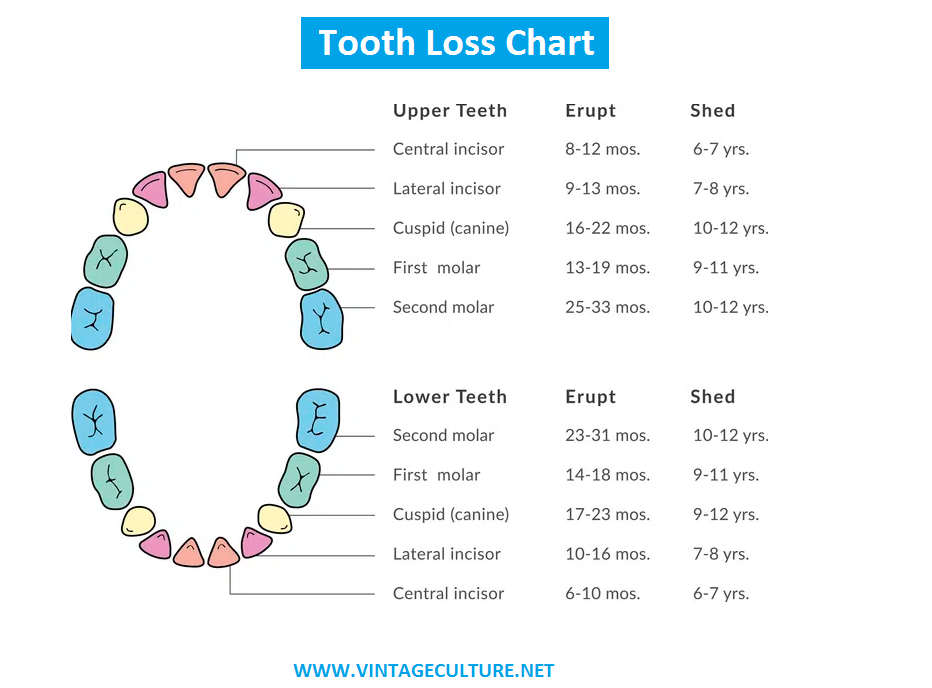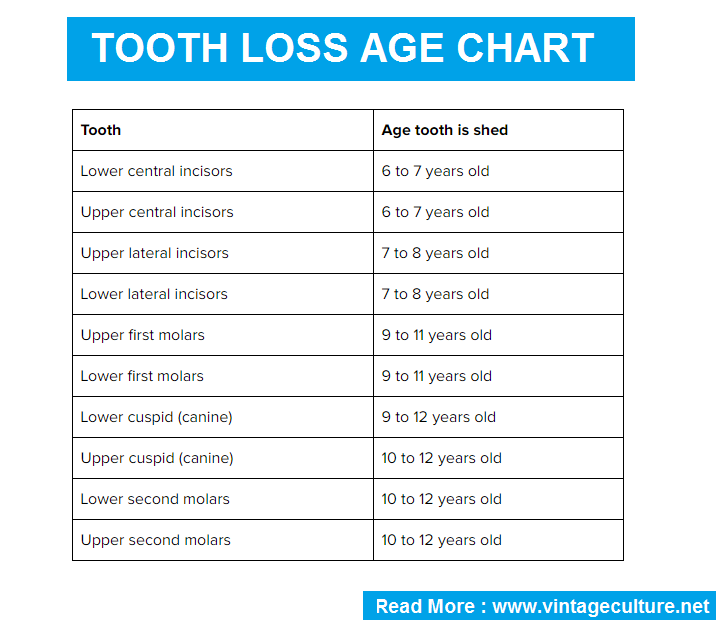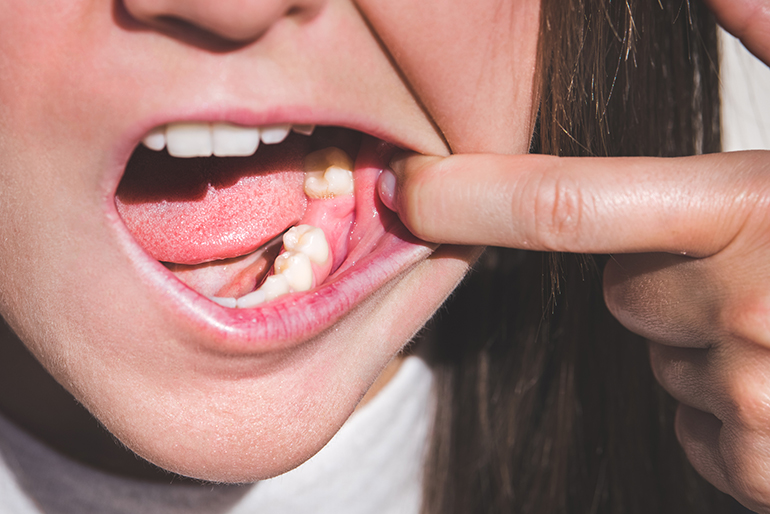A confident smile can be one of our most significant assets, conveying positivity and approachability. However, maintaining that radiant smile can become challenging when tooth loss becomes an issue. Tooth loss not only impacts our physical appearance but also our oral health and overall well-being.
What is Tooth Loss?
When someone has tooth loss, they no longer have any teeth in their mouth. This can happen for many reasons, such as getting older, having tooth problems, or not taking care of your teeth properly. It can have a big effect on a person’s oral health and general health, and they may need dental work like implants, bridges, or dentures to make them look and work normally again. In this blog post, we’ll dive deep into the common causes of tooth loss, shedding light on the factors that can compromise our pearly whites.
Tooth loss in childhood
“Tooth loss in childhood” means that a child loses their main (baby) teeth before they should, instead of letting them fall out naturally as they move from baby teeth to adult teeth. This process usually begins around age six and lasts until early teen years. Babies naturally lose their teeth and then get new ones. Most of the time, you shouldn’t stress about it.
Tooth Loss Chart

A “Tooth Loss Chart” depicts how primary (baby) teeth fall out and are replaced by permanent teeth. It generally includes primary tooth loss and permanent tooth emerging ages. Parent and child tooth loss charts explain tooth development and the transition from baby to adult teeth. These charts may include diagrams or graphics to improve pediatric dentistry oral health knowledge.
Order of Tooth Loss Age Chart
The term “order of tooth loss” refers to the exact sequence in which people naturally lose their primary (baby) teeth to make room for the emergence of their permanent (adult) teeth. This occurs in order to ensure proper alignment of the teeth when chewing and speaking.

Order of Tooth Loss
Causes of Tooth Loss

1. Tooth decay (Cavities)
Tooth decay, also known as cavities or caries, is the leading cause of tooth loss worldwide. It’s a stealthy adversary that can progress unnoticed until it reaches an advanced stage. Tooth decay occurs when bacteria in our mouths produce acids that erode the enamel—the protective outer layer of our teeth. If left untreated, these cavities can grow larger, leading to tooth infection and eventual loss.
2. Gum disease
Periodontal diseases, such as gingivitis and periodontitis, are severe conditions affecting the tissues that support our teeth, including the gums and bones. Gingivitis, the milder form, can progress to periodontitis if not managed properly. In periodontitis, the gums become inflamed and detach from the teeth, creating pockets where harmful bacteria thrive. This condition can ultimately lead to tooth mobility and loss.
3. Poor oral hygiene
One of the simplest yet most common causes of tooth loss is poor oral hygiene. Failing to brush and floss regularly allows plaque—a sticky film of bacteria—to accumulate on our teeth. Over time, this plaque hardens into tartar, leading to tooth decay and gum disease. Consistent and thorough oral care is crucial in preventing these issues.
4. Trauma & Accidents
Accidents and injuries can result in physical trauma to the mouth, causing immediate tooth damage or loss. Whether it’s a fall, a sports-related injury, or a vehicular accident, trauma can have a lasting impact on your oral health. Wearing protective gear during sports and taking precautions to prevent accidents can help minimize this risk.
5. Smoking and Tobacco Use
Smoking and tobacco use have severe consequences for oral health. These habits can increase the risk of gum disease, making it more challenging to treat successfully. Smoking also reduces blood flow to the gums, slowing down the healing process and increasing the likelihood of tooth loss. Quitting smoking is not only beneficial for your overall health but also for your teeth and gums.
Read Also: What Does an Orthodontist Do?
6. Bruxism
Bruxism, or teeth grinding, often occurs unconsciously, especially during sleep. This habit can lead to excessive wear and tear on teeth, causing them to weaken and become more susceptible to damage and loss. Mouthguards and relaxation techniques are often recommended to manage bruxism.
7. Poor nutrition
Diet plays a significant role in our overall health, including the health of our teeth and gums. A diet lacking essential nutrients, such as calcium and vitamin D, can weaken both teeth and bones, increasing the risk of tooth loss. Incorporating a balanced diet rich in calcium, vitamin D, and other essential nutrients can help maintain strong teeth.
8. Medical conditions
Certain medical conditions, such as diabetes, cancer, and osteoporosis, can have a direct impact on oral health. Diabetes, for instance, can increase the risk of gum disease and slow down the healing process. Cancer treatments like radiation and chemotherapy can also affect oral tissues, increasing the likelihood of tooth loss. If you have a chronic medical condition, it’s essential to work closely with both your medical and dental care providers to manage your oral health effectively.
9. Medications
Some medications have side effects that can impact oral health. For example, anticoagulants can lead to excessive bleeding during dental procedures, making it challenging to address dental issues. Certain antihypertensive medications can also cause gum overgrowth, increasing the risk of gum disease and tooth loss. If you’re taking medications regularly, consult your dentist to monitor and manage any potential side effects on your oral health.
10. Age
As we age, our teeth naturally experience wear and tear. Years of chewing, grinding, and exposure to various foods and beverages can lead to enamel erosion and tooth damage. While aging itself isn’t a cause of tooth loss, it can make teeth more susceptible to various dental issues. Regular dental check-ups and preventive care become increasingly crucial as we grow older.
Conclusion
Tooth loss is a common issue experienced by many individuals, but it can often be prevented or managed with proper care and attention. Maintaining good oral hygiene and adopting a healthy diet are essential steps in safeguarding your teeth and preserving your confident smile. Furthermore, quitting smoking and addressing any underlying medical conditions can also significantly reduce the risk of tooth loss.
Regular dental check-ups and prompt treatment of any dental issues are vital in catching problems early, which can ultimately help you enjoy a lifetime of healthy smiles. If you do experience tooth loss, dental implants in Shelby, TWP can provide a lasting solution. However, remember that prevention is within your control, and taking proactive steps to maintain good oral health can help you avoid tooth loss altogether.
If you want to know more about tooth Loss, Tooth decay, cavities- causes, symptoms, diagnosis, treatment, and pathology then you can go through the video.
Read More: Vintage Culture



